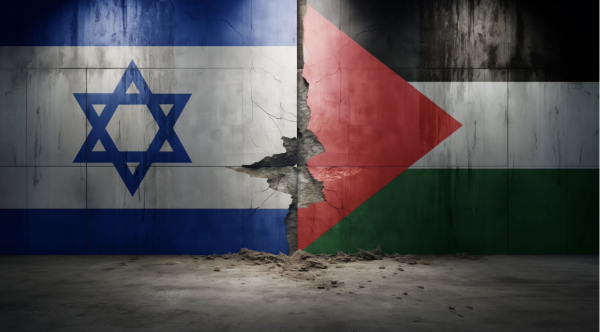
The holy night of the Jewish Sabbath was showered with an overwhelming number of rockets plummeting onto the Israeli buildings, leaving debris in its way.
According to Aljazeera, death toll is quickly spiraling on both sides as the Israeli military reported more than 800 people killed in attacks after the mass coordinated assault by the Hamas militants started early October 7. The following day, the Palestinian military reported more than 500 deaths after the retaliatory strikes by Israel on Gaza.
In retaliation to the bombings of Israel, the Israeli government has mobilized its troops along the Gaza border, announcing a “total blockade” of the Gaza Strip. The blockade would freeze the supply of food, fuel, and various other essential commodities to the already besieged territory, identifying it as a war crime.
Israel and Palestine share an interconnected history of conflict, affecting millions of people across both countries. Until today, the Israeli-Palestinian conflict has claimed tens of thousands of lives and displaced millions of people; its roots trace back to the colonial act carried out more than a century ago.
It all began with the Balfour Declaration on November 2, 1917, where the British foreign secretary Arthur Balfour wrote a letter addressed to the figurehead of the British Jewish community Lionel Walter Rothschild. It designated Palestine as the “national home for the Jewish people.” In essence, the European power had promised the Zionist movement to a country where Palestinian Arab natives comprised more than 90 percent of the population.
This began the Jewish immigration to Palestine from 1920 to 1946 when Palestinian natives still owned 94 percent of historic Palestinian land and comprised 67 percent of its population. With clashing populations, the United Nations adopted Resolution 181, which called for partitioning Palestine into Arab and Jewish states.
From 1947 to 1949, Zionist paramilitaries perpetuated operations to expand the border of the nascent Zionist state, where hundreds of Palestinian cities were destroyed, massacred, and displaced. During this period, which Palestinians refer to as Nakba, or “catastrophe” in Arabic, a total of 78 percent of historic Palestinian land was taken over. Similar to the map we know today, the remaining 22 percent was divided into what is now the occupied West Bank and the besieged Gaza Strip. These settlements have been circumscribed as illegal under international law–stand as the position of the United Nations–while Israel rejects the position. On May 15, 1948, Israel announced its establishment.
Palestinians lived under a military occupation that barred any form of political or civic expression. The first Intifada lasted from 1987 to 1993, characterized by popular mobilizations, mass protests, and civil disobedience, with hundreds of deaths and thousands of displacements. This established the beginning of the Hamas movement, an offshoot of the Muslim Brotherhood that engaged in armed resistance against the Israeli occupation. The Intifada concluded with the signing of the Oslo Accords and the formation of the interim government Palestinian Authority. In 1995, the electronic fence and concrete wall were created around the Gaza Strip.
The second Intifada began on September 28, 2000, with widespread armed conflicts that resulted in unprecedented damage to the Palestinian economy and infrastructure. Until the most recent attacks, Israel has launched four protracted military assaults on Gaza: in 2008, 2012, 2014, and 2021.
Today, Gaza is ruled by Hamas, an Islamist group designated a terrorist group by numerous nations, which is committed to the destruction of Israel. While various peace negotiation efforts have been made to resolve the long-torn conflict between the two states, both countries still recognize each other as historical enemies, refusing to coexist. According to BBC, issues at its core include addressing the Palestinian refugees, whether Jewish settlements in the occupied West Bank should stay or be removed, whether the two sides should share Jerusalem, and whether a Palestinian state should be created alongside Israel. However, tensions between the two states have skyrocketed, erupting the deadliest violence yet to be seen.
As such, the conditions in Gaza have deteriorated into a “complete catastrophe” with shortages of clean water and food as tens of thousands of Palestinians attempt to flee airstrikes and an Israeli ground offensive according to CNN. The Israeli military stated Saturday, October 14, that its forces are readying for the next stages of the war, including “combined and coordinated strikes from the air, sea, and land in response to the unprecedented October 7 terrorist attacks by Hamas. Now, the Israeli government must take into account its sovereignty and the 199 hostages held captive in Palestine.
In spite of everything, the Israeli-Palestinian conflict heightens day by day. As students of Chadwick International and a global citizen of the international community, we must remember the records of both sides of the story. Research more about the issue and formulate your own stance!













